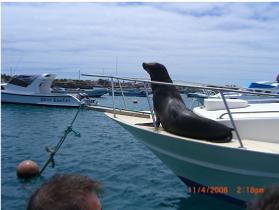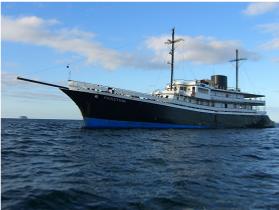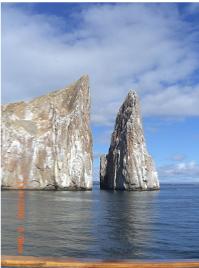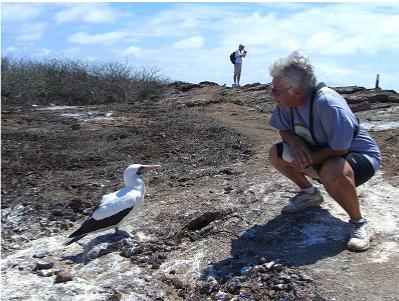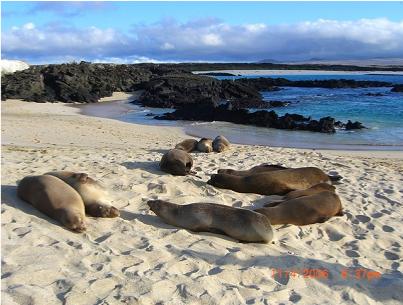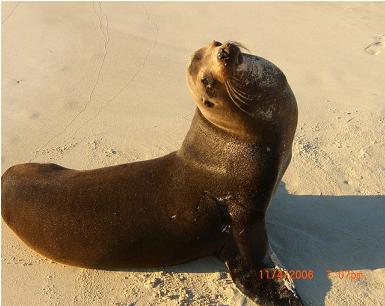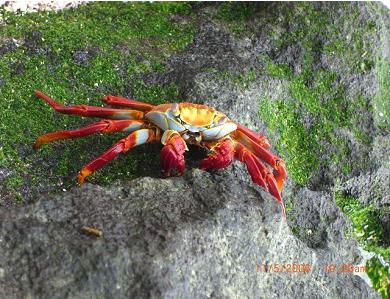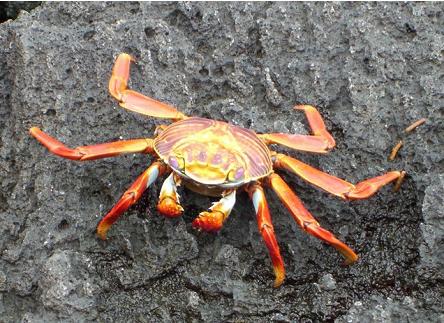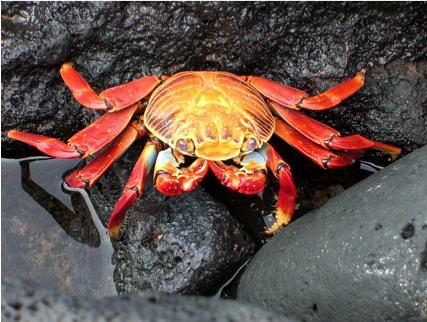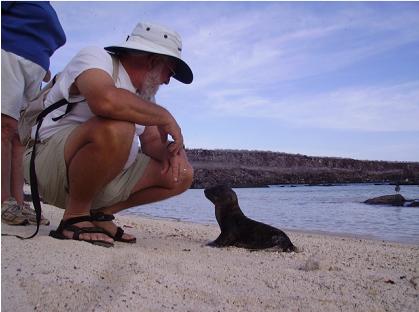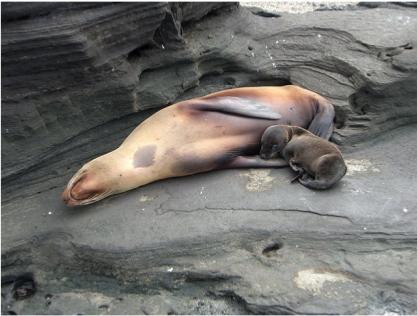11/04/2006 to 11/11/2006
Originally we were scheduled to be on the Parranda - a 16 passenger boat. Friday night, we were informed that the Parranda had engine problems and we would be shifted to another ship. As it turned out, it was a fortunate switch and we had a wonderful week.
After an easy travel morning by car, plane, and bus, we stepped into our "panga", passed a reception committee of sea lions and finally boarded the M/V Evolution, our home for the next seven days.
For the next 7 days we stumbled on volcanic rock walks, snorkeled along volcanic rock islands, and photographed all kinds of creatures. The Galapagos is an unique laboratory which was the source of Darwin's observations leading to the theories of evolution. A lot of Darwin's notes were about finches and the length and shape of their beaks. That is too technical for us, .
We were interested in seeing the animals up close. The animals we saw were primarily birds and reptiles. We also saw fish and marine life when we were snorkeling, but the main attraction were the birds and reptiles. Each morning and afternoon we would go for a walk on the island where we were anchored. Each island has some unique species and a lot of the same. Only 3 percent of the Galapagos is privately owned. The remainder is owned by Ecuador and is primarily a National Park. The places that tourists are able to go are very tightly regulated. There are paths defined and you MUST stay within the path boundaries. In spite of these strict rules and limited access, you still have to be very careful not to step on one of the animals. They are not afraid of people. Sometimes, the animals are in the middle of the trails and you have to go around them. On many occasions, we were walking over the lava and almost stepped on a marine iguana.
REPTILES
We saw only a few different species of reptiles. The one we saw the most was the marine iguana. These are ugly, prehistoric looking monsters that lie in the sun on the lava. Every so often they go into the water to cool their bodies and to feed on the algae,
We also saw some land iguanas. They are relatively slow moving, large, ugly, lizard like animals. And there were Lava Lizards which are small and similar to what we get at home.
To see pictures of the reptiles, click here.
Before doing our first trek, we had to "sail" (We didn't have sails so we motored!) to our first destination. On the way we circumnavigated Kicker Rock. This is a beautiful formation as you can see.
Lots and lots of birds. We saw 3 kinds of boobies - blue footed, red footed and nazca or masked booby. We also saw pelicans, finches, gulls, frigate birds, and many other varieties. To see some of the birds, click here.
We also saw lots of marine life. Certainly the most common animal was the sea lion. They were EVERYWHERE. You had to be careful when walking on the beaches that you didn't step on one. They are also VERY noisy. They bark constantly. There were lots of newborn pups that went scooting after their mother. Click here to see a video of a mother and her young pup.
This is what greeted us on our first excursion to one of the islands.
There were a lot of mothers and young pups. We even saw some pups that were probably 1 or 2 days old. They struggle after mother and aren't too happy when she goes off.
The young pup below is too young to swim. As we were approaching, Mama went for a swim and the pup wasn't able to follow. It became very upset and was looking for comfort. It came right over to Grandpa and sniffed at his leg.
Certainly the most colorful creature we saw was the Sally Lightfoot crab. These crabs go scurrying about. The body of the crab is about 4 - 5 inches across. With the claws outstretched they probably measure about 10 - 12 inches.
